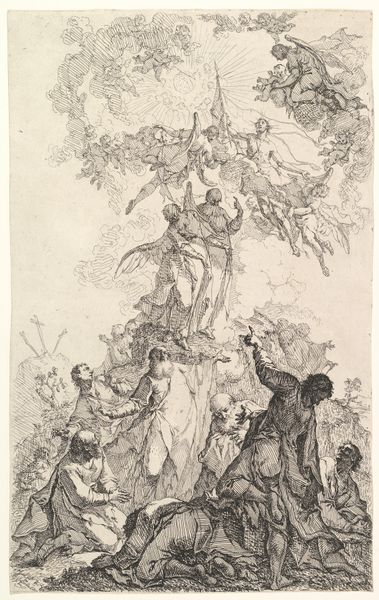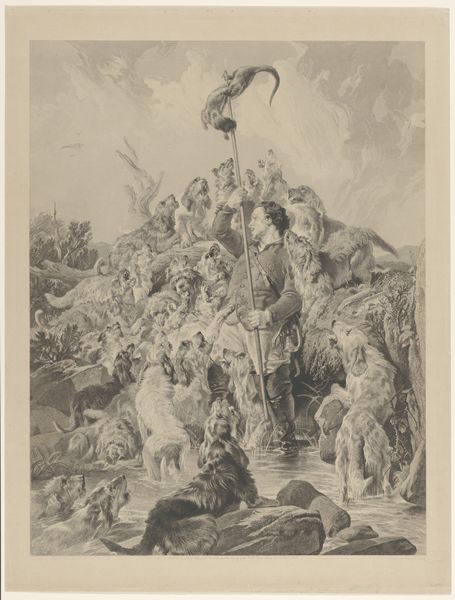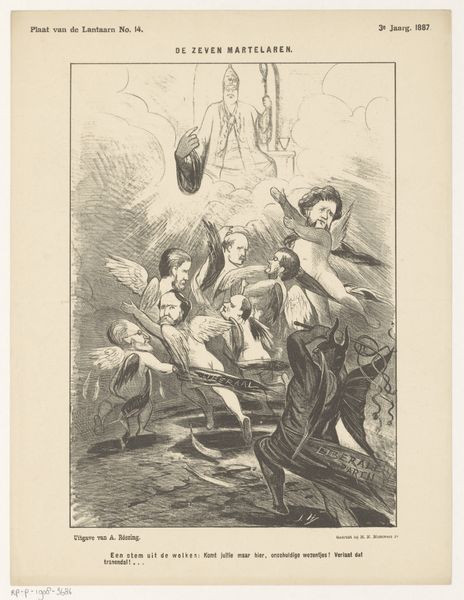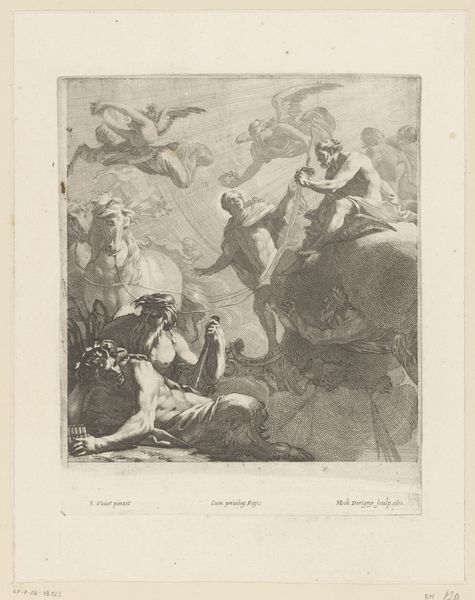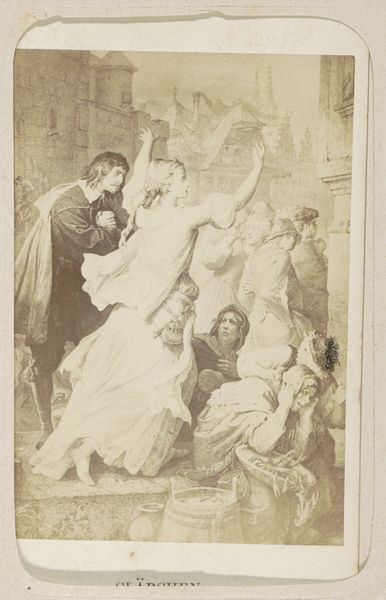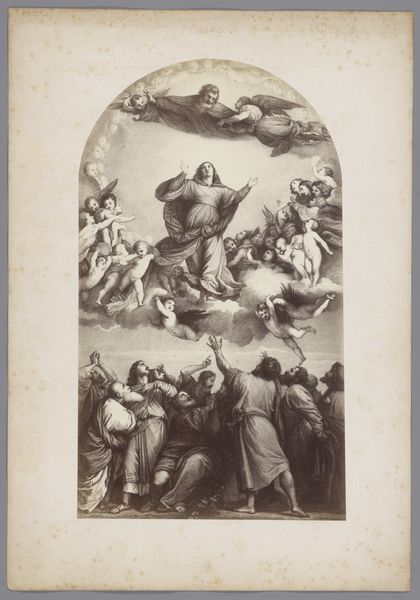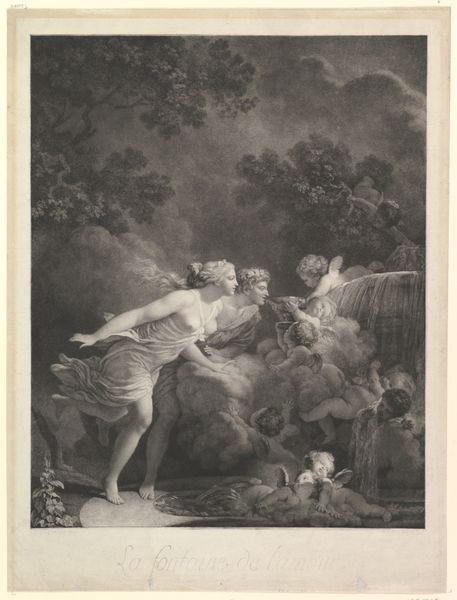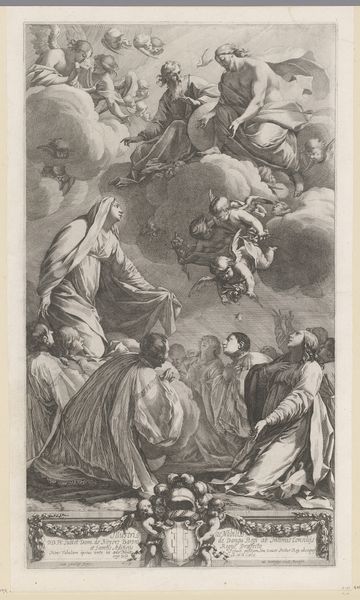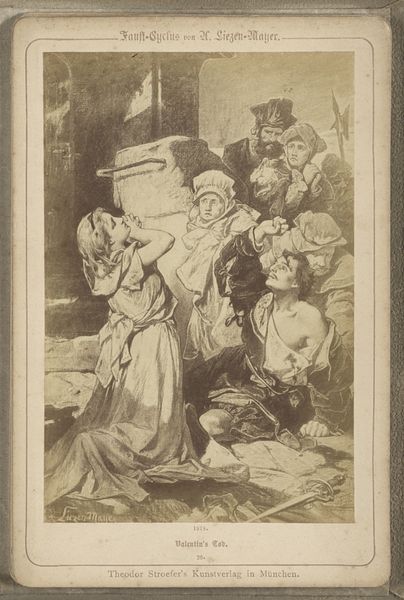
Dimensions: height 138 mm, width 88 mm, height 172 mm, width 113 mm
Copyright: Rijks Museum: Open Domain
Curator: Let's discuss this photographic reproduction of a charcoal drawing thought to be titled "Heksendans," dating back to 1878. It presents a swirling scene, very dreamlike, and slightly unsettling. Editor: My first impression? Overwhelming! There's a chaos to the composition—a multitude of figures seemingly caught in a vortex. It’s difficult to make out any single clear narrative, but it absolutely evokes a feeling of ecstatic frenzy. Curator: It is a visual echo chamber of its time. The late 19th century witnessed a surge in occultism and spiritualism. It would be fascinating to explore how those currents may have shaped its reception at the time. The artwork also underscores an increased popular and scientific interest in psychology and the hidden parts of our consciousness, all while it's couched in that very appealing Romanticist visual style. Editor: Absolutely! And even now, the idea of 'witches' dancing reflects deep-seated cultural anxieties. This piece likely participated in constructing, but also, possibly, challenged the images of women in power as dangerous or deviant. Who controls the narrative controls, or can distort the imagery. What are your thoughts about the setting or background, do you think the intention was to portray it in such an obscured and blurry manner? Curator: The dreamlike haze, crafted via charcoal and then translated through photography, does add to the feeling of otherworldliness, a liminal space. This obscurity aligns with a fascination for the supernatural that, historically, offered a space to confront anxieties of social change during this time. The indistinct background is very common, for instance, within many pieces that rely on storytelling. The details should not prevail against the main figures. Editor: Thinking about power dynamics, I wonder what audience it intended to address? I am quite certain this kind of imagery did not simply hang in family homes. Curator: Most likely. These fantasy works served as important fodder for visual culture and nationalistic mythmaking, for the upper social class during that time, but of course its impact might've expanded greatly throughout time. Editor: Yes, I wonder what conversations this art stirred then—conversations which perhaps ripple into our interpretations now, even in the 21st century. Curator: It's this weaving of socio-political undercurrents within popular aesthetics that makes art from any era profoundly relevant today.
Comments
No comments
Be the first to comment and join the conversation on the ultimate creative platform.

